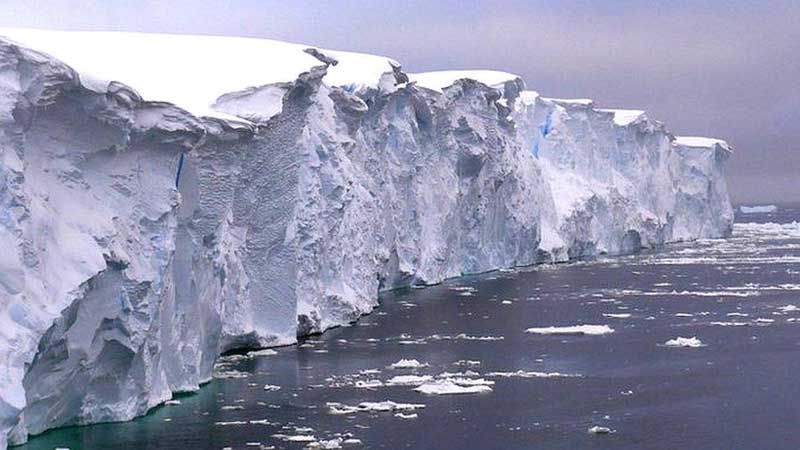The glacier is about 74,000-square-miles — roughly the size of Florida — and is one of the largest and fastest-melting glaciers in Antarctica, researchers told reporters at a press conference on Monday. The Thwaites eastern Ice Shelf, the area of concern, makes up one-third of the glacier.
That shelf, researcher Erin Pettit told reporters, is currently “acting like a dam” for the rest of the glacier. But warm water has seeped under the glacier, causing it to melt, and the ice shelf is appearing to “lose its grip” on an underwater seamount that keeps it stable.
Ted Scambos, of the Cooperative Institute for Research in Environmental Sciences, explained that the warm water underneath the glacier is essentially “eating away at the ice shelf.”
Researchers said the shelf’s ice is “rapidly” shattering. The evidence indicates that the ice shelf’s “final collapse” could occur within as little as 5 years.
This deadly punch-jab-uppercut combination of melting from below, ice shattering and losing its grip on the pinning point is pushing the ice shelf to imminent collapse, within as little as three to five years, said Erin Pettit, a glaciologist at Oregon State University in Corvallis.
Satellite data show that over the last 30 years, the flow of Thwaites Glacier across land and toward the sea has nearly doubled in pace.
That makes Thwaites “the most important place to study for near-term sea level rise,” Scambos said. So in 2018, researchers from the United States and the United Kingdom embarked on a joint five-year project to intensively study the glacier and try to anticipate its imminent future by planting instruments atop, within, below it as well as offshore of it.
mh/pll/jha/znc









